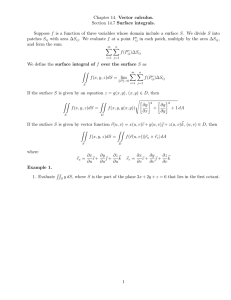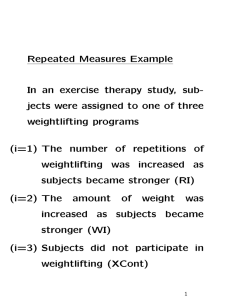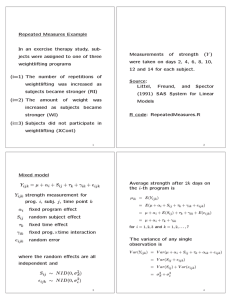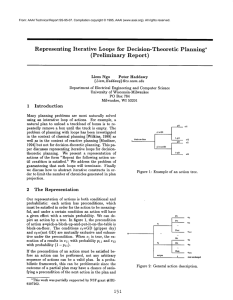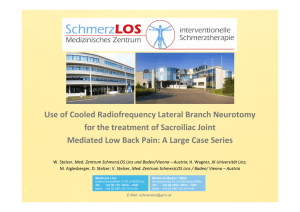14.7 Surface Integrals
advertisement
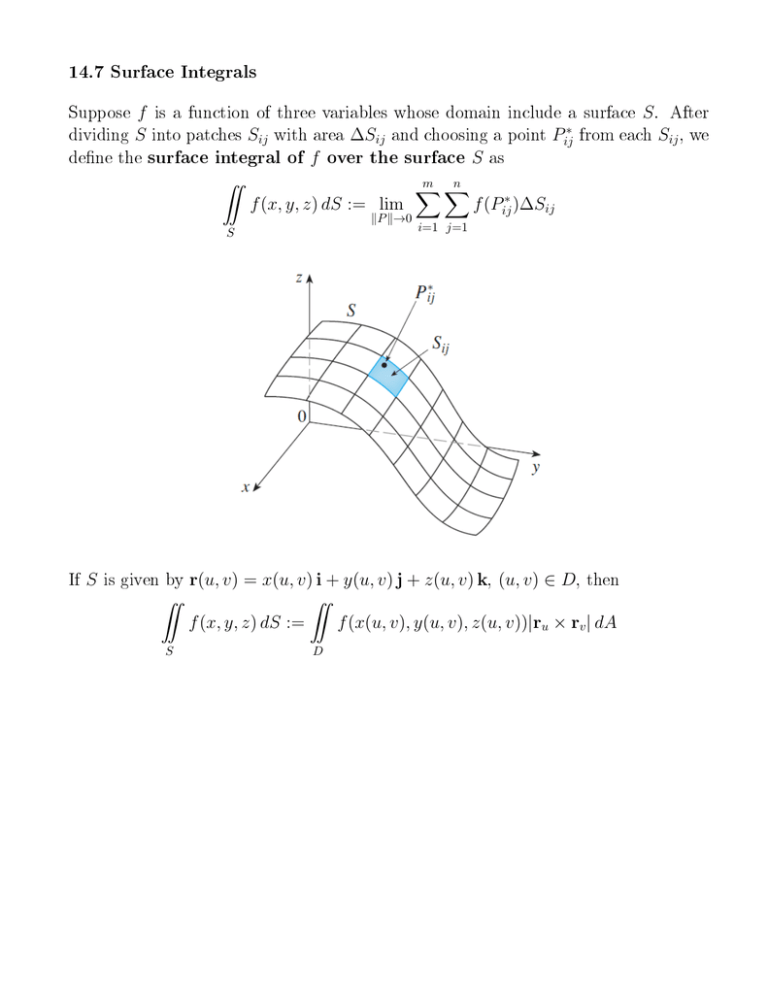
14.7 Surface Integrals Suppose f is a function of three variables whose domain include a surface S . After dividing S into patches Sij with area ∆Sij and choosing a point Pij∗ from each Sij , we dene the surface integral of f over the surface S as ¨ f (x, y, z) dS := lim kP k→0 S m X n X f (Pij∗ )∆Sij i=1 j=1 If S is given by r(u, v) = x(u, v) i + y(u, v) j + z(u, v) k, (u, v) ∈ D, then ¨ ¨ f (x(u, v), y(u, v), z(u, v))|ru × rv | dA f (x, y, z) dS := S D Example 1. Evaluate ˜ lies in the rst octant. S y dS , where S is the part of the plane 3x + 2y + z = 6 that If a thin sheet has the shape of a surface S and the density at the point (x, y, z) is ρ(x, y, z), then the total mass of the sheet is ¨ ρ(x, y, z) dS m= S Example 2. Find the mass of a thin funnel in the shape of a cone z = x2 + y 2 inside the cylinder x2 + y 2 = 2x, if its density is a function ρ(x, y, z) = x2 + y 2 + z 2 . p Oriented Surfaces If it is possible to choose a unit normal vector n at every such point (x, y, z) so that n varies continuously over S , then S is called an oriented surface and the given choice of n provides S with an orientation. There are two possible orientations for any orientable surface. When S is a smooth orientable surface given in parametric form by a vector function r(u, v), then it is automatically supplied with the orientation of the unit normal vector n= ru × rv |ru × rv | and the opposite orientation is given by −n. Convention: For a closed surfaces (is the boundary of a solid region), the positive orientation is outward. A Möbius strip is an example of non-orientable surfaces. Surface Integrals of Vector Fields Suppose that S is an oriented surface with unit normal vector n and a uid with density ρ(x, y, z) and velocity eld v(x, y, z) ows through S . If we divide S into small patches Sij with area ∆Sij and choose a point Pij∗ from each Sij , then the mass of uid per unit time crossing Sij in the direction of n is approximately equal to ρv · n∆Sij . By forming Riemann sum and taking limit, we get the rate of ow through S : ¨ ρv · n dS S Denition. If F is a continuous vector eld dened on an oriented surface S with unit normal vector n, then the surface integral of F over S is ¨ ¨ F · dS := S F · n dS S This integral is also called the ux of F across S . If S is given by a vector function r(u, v) with (u, v) ∈ D, then ¨ ¨ F · n dS = S Thus F· ru × rv |ru × rv | dA |ru × rv | D ¨ ¨ F · dS = S F · (ru × rv ) dA D Example 3. Evaluate centered at the origin. ˜ S F · dS where F = z i + y j + x k and S is the unit sphere An application of surface integrals occurs in the study of heat ow. Suppose the temperature at a point (x, y, z) in a body is u(x, y, z). Then the heat ow is dened as the vector eld F = −K ∇u where K is a constant called the conductivity of the substance. The rate of heat ow across the surface in the body is then given by the surface integral ¨ ¨ F · dS = −K S ∇u · dS S Example 4. The temperature at the point (x, y, z) in a substance with conductivity K = 10 is u(x, y, z) = x2 + y 2 + z 2 . Find the rate of heat ow inward across the sphere x2 + y 2 + z 2 = 4.
